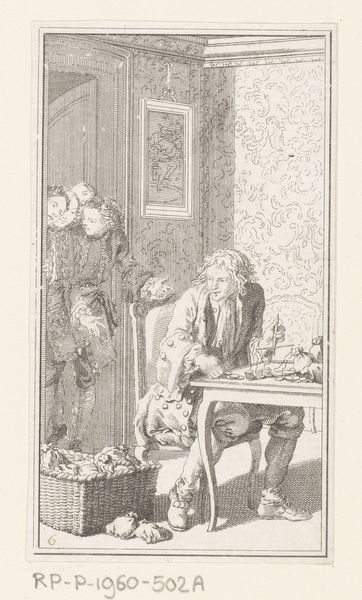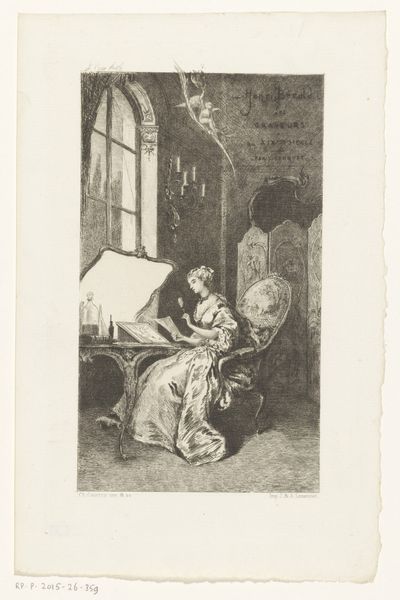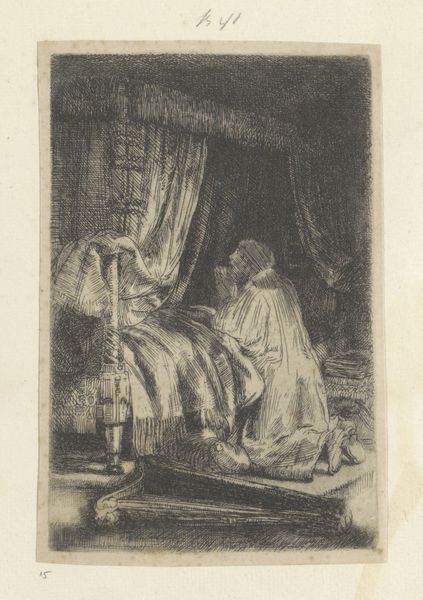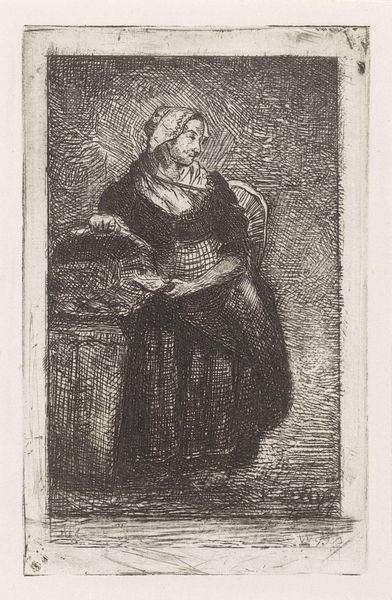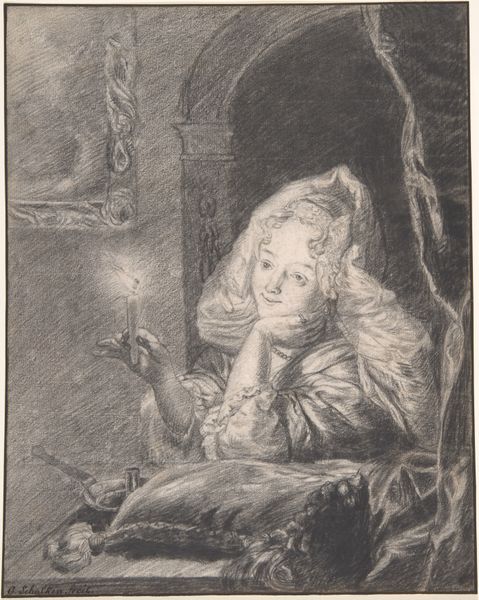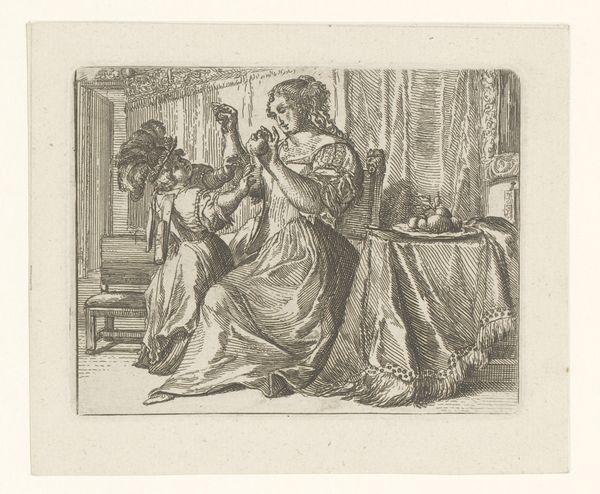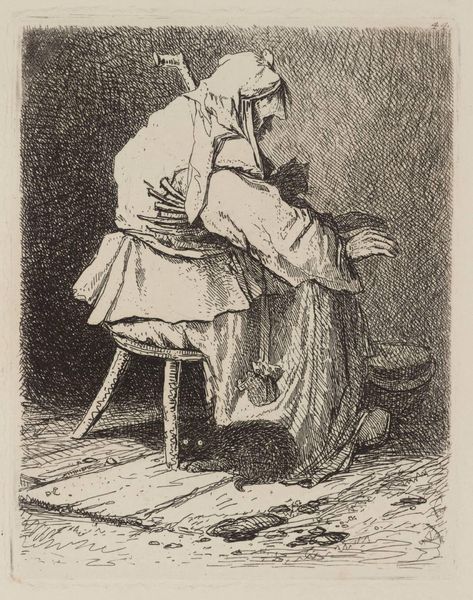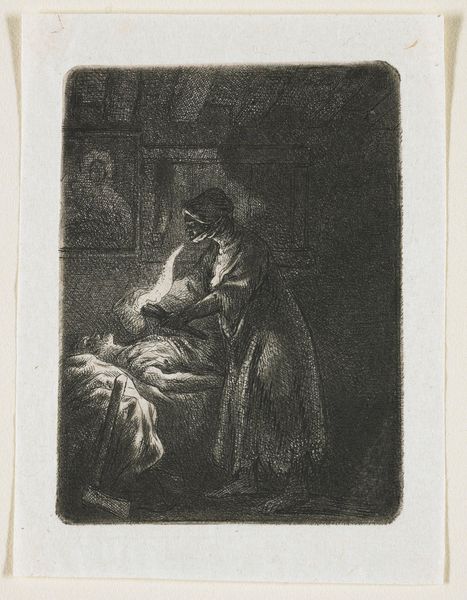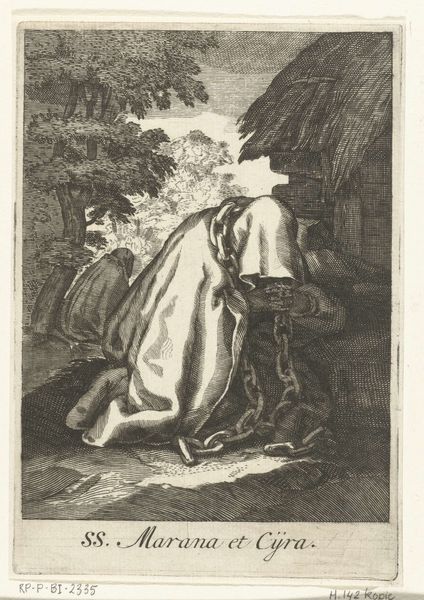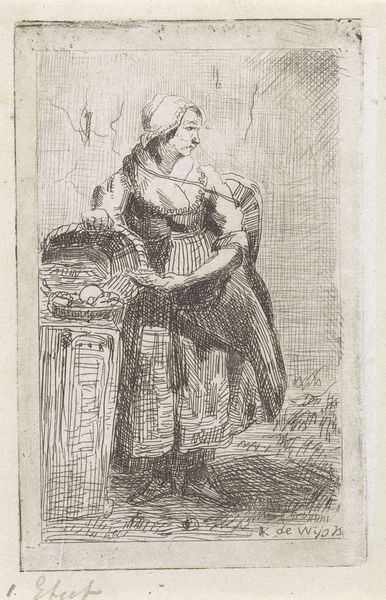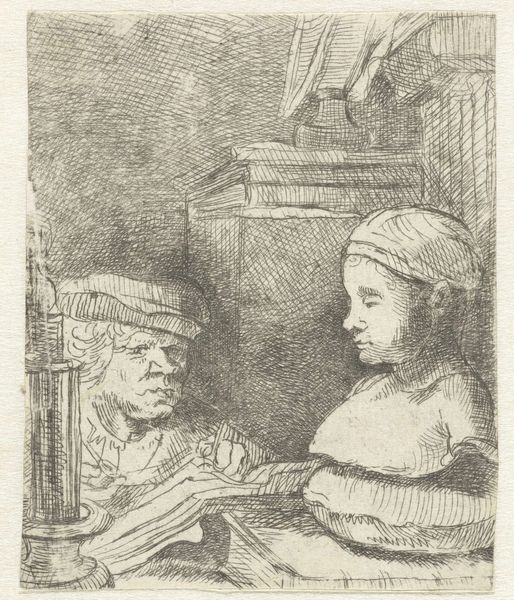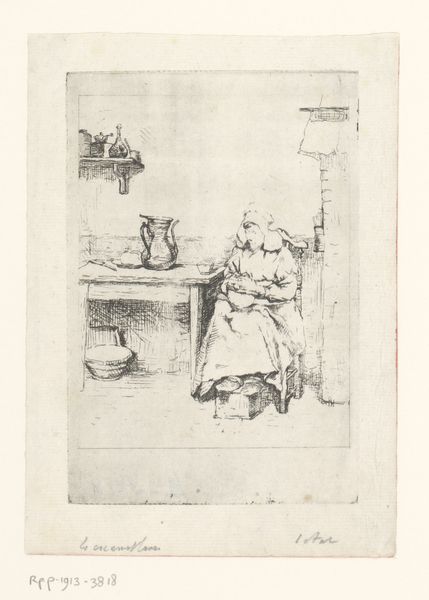
drawing, pencil
#
portrait
#
pencil drawn
#
drawing
#
pen sketch
#
pencil sketch
#
figuration
#
pencil drawing
#
romanticism
#
pencil
#
line
#
genre-painting
Dimensions: height 111 mm, width 99 mm
Copyright: Rijks Museum: Open Domain
Editor: This is "Woman with a Letter in Hand on a Balustrade" by Johannes Adrianus Schultz, dating from between 1830 and 1863. It's a pencil drawing and it feels quite intimate and contemplative. What do you see in it? Curator: Well, immediately I’m drawn to the materiality of the piece. Look at the dense network of lines creating the dress. Notice the visible labor involved in the repetitive strokes, mimicking the labor possibly referenced in the woman's letter or situation. What's her role, and what is she doing? Editor: That's interesting, I hadn't thought about the labour implied by the mark-making! I suppose, since it's titled "with a Letter", she's potentially facing a decision or news connected with work or family. Curator: Precisely. Now, consider the social context: the Industrial Revolution. How did it affect labor for women of different social strata? Was this type of work viewed as liberating, or oppressive, even? Also, look at the materiality: cheap paper. Consider its accessibility and relation to literacy across socioeconomic groups in this period. Editor: So, by considering the process and materials, we can see that the drawing reflects a specific time, potentially unveiling societal power structures tied to class, gender, and literacy. Curator: Exactly! We might see this work as commenting on a particular kind of commodity culture in that historical moment. Editor: That connection really transforms how I understand the piece; what was initially a sentimental portrait speaks to much larger social themes! Curator: Indeed. Looking closely at the materials and process opens up a wider historical understanding of this evocative image.
Comments
No comments
Be the first to comment and join the conversation on the ultimate creative platform.
